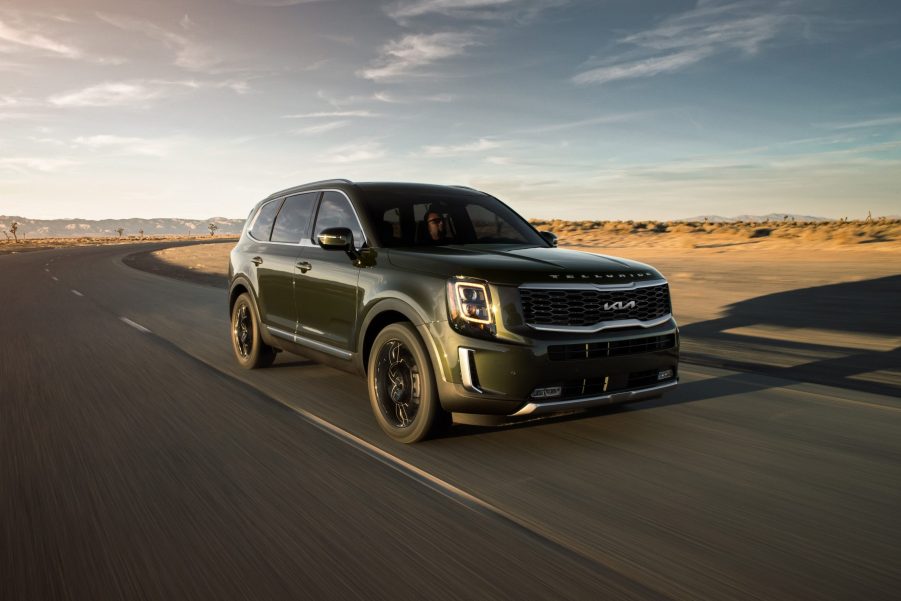
How to Choose Between a New or Used SUV According to Consumer Reports
The SUV is one of the most popular vehicle segments in America. The crossover is the best-selling vehicle segment in the country. They accounted for 45 percent of all automobile sales in June 2021. The pickup truck comes in second, according to Statista, but sold only 17.6 percent of all automobile sales during that time frame. That’s a massive margin from first to second place. If you’re in the market for a new or used vehicle, chances are you’re interested in an SUV. Every automaker now has an entire lineup devoted to SUVs, and with so many to choose from, how do you narrow it down? Is it worth buying a new SUV over a used one? Consumer Reports helped us break down how to choose between a new or used SUV.
New SUVs

First and foremost, you know exactly what you’re buying. A new SUV will come with the latest technology and safety equipment, brand-new undamaged parts from top-to-bottom, and factory warranties. Not to mention the customization. With a new vehicle, you can choose your color, trim, extras, and anything else. You can even special order something if you’d like. Typically, financing rates come at a lower cost than a used vehicle, and leasing is always an option. Price is usually the deciding factor when choosing between a new or used SUV.
The most significant drawback to any new vehicle, not just SUVs, is the depreciation factor. It really is true, that you lose money the second you drive a new vehicle off the dealer’s lot. Consumer Reports says vehicles typically lose a third of their value within two to three years of the original sale. Of course, pricing and depreciation in general, depend heavily on the specific make and model, the current market, and even the location. Sometimes financing a brand new vehicle ends with the buyer paying more than the vehicle was worth new. That’s something worth avoiding. New vehicles give peace of mind through new parts and warranties, but lose value quickly and often break the bank.
Used SUVs

The typical reason for buying a used SUV would be the savings it provides. The majority of modern SUVs will last up to 200,000 miles or more if maintained properly. The United States alone has a used vehicle market three times the size of the new-vehicle market. This means when exploring the market for a used SUV, you have three times as many options as if you went for a new SUV. You lose the customization options and ability to choose your favorite color, but there’s usually enough in the market to find what you’re looking for. With proper research, buyers can usually find an SUV they’re interested in that’s been properly maintained. Getting as much information from the seller is important, especially in a private setting.
The negatives of buying a used SUV are mostly issues you don’t know about. Every seller, from dealer to Craigslist, could be hiding information about a vehicle or not know the condition of something themselves. Any number of things can be worn down over time, so it’s always a possibility something goes wrong right after you purchase. That’s why getting all the information you can about a used SUV before purchasing is the most important thing. Dealerships can usually provide CarFax reports or other sources for accident history, as well as a repair order noting anything fixed since the vehicle was in their possession.
Both new and used SUVs have pros and cons to purchasing. Used SUVs are certainly the cheaper option in the short term. With warranties and no history of accidents or issues, new SUVs will likely be less costly in maintenance. Used vehicles are a risk, but with the right amount of research, most buyers can end up with a great SUV for a decent price. Those are the factors to consider when figuring out how to choose between a new or used SUV, according to Consumer Reports.



